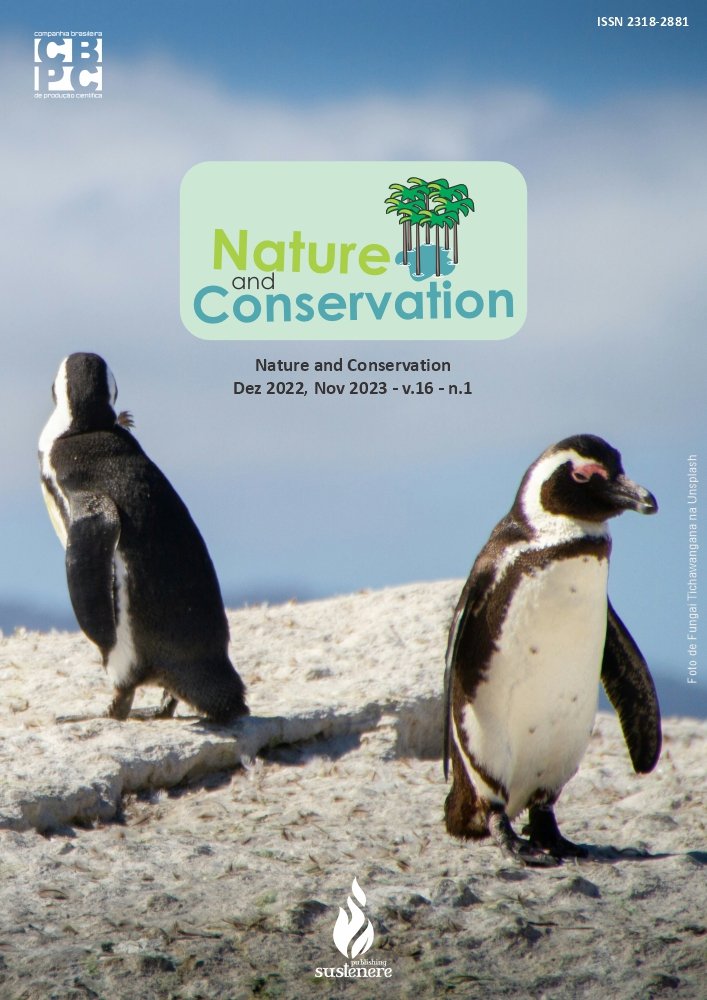Anurans as bioindicators of the effect of hazardous waste discharge in the waters of the Gurjaú state reserve, northeastern brazil
DOI:
https://doi.org/10.6008/CBPC2179-6858.2023.004.0003Palabras clave:
Amphibians, Pollution indicators, Gurjaú River, Environmental degradationResumen
Frogs use different kinds of environment in their life cycle; hence, they may be indicators of pollution and environmental degradation. In the present study, the frogs are relevants to evaluate the harmful effects of waste disposal. We carried out weekly sampling by active search from January to December 2004 in a 1-km stretch of the Gurjaú River, at the Gurjaú State Reserve (SRSG), located in the south of the city of Recife, which is managed by Pernambuco Sanitation Company (COMPESA), maintaining a water treatment plant in the reserve since the damming of the Gurjaú River. COMPESA discharges quarterly the chemical waste from the cleaning of its settling tanks directly into the Gurjaú River, downstream of the water uptake. The study displayed that among 40 species, six were observed near the river: Hypsiboas semilineatus (Spix, 1824), Leptodactylus gr. marmoratus (Steindachner, 1867), Scinax x-signatus (Spix, 1824), Litobathes palmipes (Spix, 1824), Leptodactylus vastus (Spix, 1824), and Pseudopaludicola gr. falcipes (Hensel, 1867). The site located upstream of the waste discharge had much more captures than the site located downstream of it. Based on the physicochemical analysis of the water, we conclude that the activities of COMPESA have high environmental impact.
Descargas
Descargas
Publicado
Número
Sección
Licencia
Derechos de autor 2023 Revista Iberoamericana de Ciencias Ambientales

Esta obra está bajo una licencia internacional Creative Commons Atribución-NoComercial-SinDerivadas 4.0.
La CBPC - Companhia Brasileira de Produção Científica (CNPJ Brasil: 11.221.422/0001-03) tendrá los derechos materiales de los trabajos publicados. Los derechos se refieren a la publicación del trabajo en cualquier parte del mundo, incluyendo los derechos a las renovaciones, expansiones y diseminaciones de la contribución, así como otros derechos subsidiarios. Todos los trabajos publicados electrónicamente podrán posteriormente ser publicados en colecciones impresas bajo coordinación de esta empresa y / o sus socios. El (los) autores (as) conservan los derechos de autor, pero no están autorizados a publicar la contribución en otra medio, impreso o digital, en portugués o traducción.









